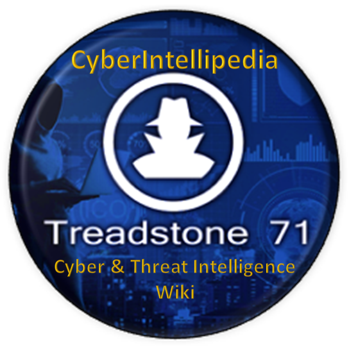
Insider Threats & Elicitation Methods
The course is a modern shield forged and built to expose deception and validate identity with brutal clarity. It strips away assumptions, presses for truth, and treats every interview like a counterintelligence operation. Interviewers learn to test claims under pressure, probe for inconsistencies, and force impostors off-script.
Insider Threats & Elicitation Methods
A modern shield built to expose deception and validate identity with clarity. Treat every interview as a counterintelligence operation. Test claims under pressure, surface inconsistencies, and force impostors off-script with structured methods and live verification.
Start Now Preview SyllabusCourse Overview
Interviews shift from casual dialogue to disciplined vetting. Video calls become forensic tests with liveness checks and workspace scans. Candidates code live, think aloud, and adapt in real time. Stories face stress tests, voices face analysis, timelines face cross-checks. Layers include psychological pressure, linguistic traps, full-screen audits, and cultural nuance. Deepfakes falter, voice clones stumble, scripted answers collapse. Résumés become bait—expanded, dissected, and validated.
Course Information
The body of work—including the Treadstone 71 Insider Threats Capability Maturity Model (CMM), AI-enhanced detection frameworks, behavioral indicators, elicitation resistance methods, and deception detection protocols—is proprietary intellectual property of Treadstone 71.
Materials include interview training models, simulation labs, and operational playbooks for remote, hybrid, and on-site environments. Content spans interviewer training, response operations, maturity modeling, government-aligned frameworks, and cultural/geographic elicitation.
Methods address insider risk through psychological indicators, behavioral telemetry, live video deception resistance, AI/ML analytics, and stylometric profiling. Playbooks, indicators, red-flag signposts, and assessment metrics support readiness and maturity scaling.
Alignment with CISA, ODNI, DHS, and NIST standards supports cross-functional integration across technical, HR, legal, and executive roles.
Learning Objectives
Syllabus Outline
Part 1 — Foundations of Insider Threats
| 1 | Introduction to Insider Threats |
| 2 | Historic Shifts and Organizational Blind Spots |
| 3 | Definition Models of Insider Threats |
| 4 | Core Characteristics of Insider Threat Behavior |
| 5 | Modern Drivers Across Environments |
| 6 | Insider Access vs. Insider Risk |
| 7 | Psychological Indicators of Insider Risk |
| 8 | Risk Amplification in Remote and Hybrid Settings |
| 9 | Digital Forensics of Insider Breaches |
| 10 | Mitigation and Resilience Engineering |
| 11 | Strategic Pillars: Prevention First · Behavioral Intelligence · Continuous Validation · Feedback & Resilience |
Part 2 — Advanced Interviewing and Detection Techniques
| 1 | Insider Threat Interview Protocols |
| 2 | Deception Detection in Remote Interviews |
| 3 | Behavioral Elicitation Techniques |
| 4 | Real-Time Technical Verification Methods |
| 5 | Legal, Ethical, and Privacy Constraints |
| 6 | Simulation-Based Interviewer Training |
| 7 | Live Interview Analysis and Debrief Loops |
| 8 | Stylometric and Phonetic Analysis |
Part 3 — Government Frameworks and Compliance
Part 4 — Insider Threat Maturity Models
Part 5 — Insider Threat Response Operations
Part 6 — Organizational Resilience and Continuous Improvement
Elicitation Techniques — Extracting Truth, Revealing Deception
Topics Covered
Generative AI Integration
AI supports adversary simulation, deception design, and real-time insight. Automated checks detect disinformation, counter influence operations, and refine tactics during ongoing interviews and investigations.
Lead Instructor
Forty years of intelligence experience are built into this online recorded course with the availability for instructor office hours or email/text Q&A
Access on-demand modules, simulations, and playbooks. Build an interview and vetting program that catches what others miss.
© 2025 Treadstone 71. All rights reserved.
Your Instructor

Treadstone 71 is a woman and veteran-owned small business exclusively focused on cyber and threat intelligence consulting, services, and training. We are a pure-play intelligence shop.
Training dates and locations here
Since 2002, Treadstone 71 delivers intelligence training, strategic, operational, and tactical intelligence consulting, and research. We provide a seamless extension of your organization efficiently and effectively moving your organization to cyber intelligence program maturity. Our training, established in 2008, follows intelligence community standards as applied to the ever-changing threat environment delivering forecasts and estimates as intelligence intends. From baseline research to adversary targeted advisories and dossiers, Treadstone 71 products align with your intelligence requirements. We do not follow the create once and deliver many model. We contextually tie our products to your needs. Intelligence is our only business.
- We use intuition, structured techniques, and years of experience.
- We supply intelligence based on clearly defined requirements.
- We do not assign five people to do a job only one with experience.
- We do not bid base bones only to change order you to overspending.
We are known for our ability to:
- Anticipate key target or threat activities that are likely to prompt a leadership decision.
- Aid in coordinating, validating, and managing collection requirements, plans, and activities.
- Monitor and report changes in threat dispositions, activities, tactics, capabilities, objectives as related to designated cyber operations warning problem sets.
- Produce timely, fused, all-source cyber operations intelligence and indications and warnings intelligence products (e.g., threat assessments, briefings, intelligence studies, country studies).
- Provide intelligence analysis and support to designated exercises, planning activities, and time-sensitive operations.
- Develop or recommend analytic approaches or solutions to problems and situations for which information is incomplete or no precedent exists.
- Recognize and mitigate deception in reporting and analysis.
Assess intelligence, recommend targets to support operational objectives. - Assess target vulnerabilities and capabilities to determine a course of action.
- Assist in the development of priority information requirements.
- Enable synchronization of intelligence support plans across the supply chain.
- ...and Review and understand organizational leadership objectives and planning guidance non-inclusively.
